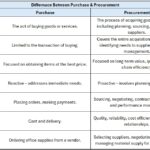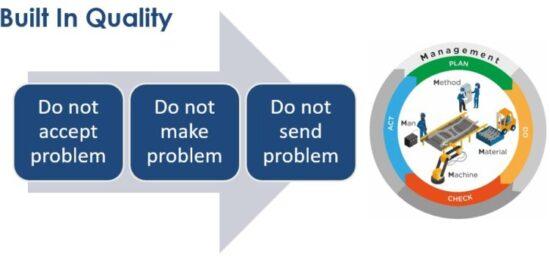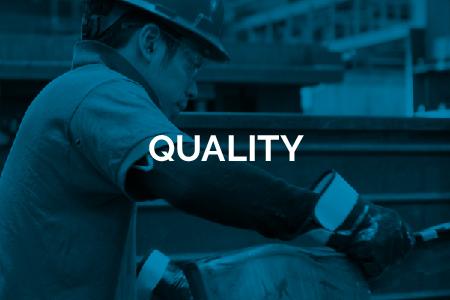How ChatGPT Transforms the Problem-Solving Landscape
Introduction
In today’s rapidly evolving industries, ensuring top-notch quality has become a non-negotiable priority. Modern quality engineering goes beyond routine checks; it’s about preventing issues, streamlining processes, and driving continuous improvement. Quality assurance professionals constantly grapple with intricate challenges that demand innovative solutions. Enter ChatGPT – an artificial intelligence marvel that’s reshaping the problem-solving landscape for quality engineers.
What is Modern Quality Engineering All About?
Modern quality engineering is more than just checking boxes and adhering to standards. It’s a dynamic approach that focuses on preventing issues, streamlining processes, and continuously improving products. Quality engineers in the modern era are tasked with not only identifying problems but also understanding the root causes and implementing proactive measures. This shift has been necessitated by the increasing complexity of products and the need to meet ever-higher customer expectations.
The Evolution of Quality Assurance:
Traditional quality assurance methods have long been the backbone of maintaining product excellence. These methods involve stringent checks and validations at various stages of production. However, these approaches often fall short when confronted with complex, multifaceted issues that don’t fit neatly into predefined categories. As industries become more sophisticated, quality engineers face mounting pressure to deliver efficient solutions that go beyond the scope of traditional techniques.
Introducing ChatGPT to Quality Engineering:
In this landscape, ChatGPT emerges as a game-changing tool. Powered by advanced language processing models, it can understand context, generate human-like responses, and adapt to various scenarios. Quality engineers are now tapping into ChatGPT’s capabilities to augment their problem-solving endeavours. The AI can sift through vast amounts of data, regulations, and best practices, extracting relevant information quickly. This not only accelerates decision-making but also enables quality engineers to focus on higher-level strategic tasks.
Transforming Problem-Solving Through ChatGPT :
Consider a scenario where a manufacturing line is experiencing an unexpected glitch. Instead of combing through exhaustive manuals and protocols, a quality engineer can engage ChatGPT. By describing the problem in plain language, the AI can swiftly identify potential causes and suggest troubleshooting steps. This expedites the decision-making process and minimizes production downtime. The ability of ChatGPT to analyse data rapidly and provide actionable insights helps quality engineers make informed decisions with confidence.
Quality Problem Solving Steps:
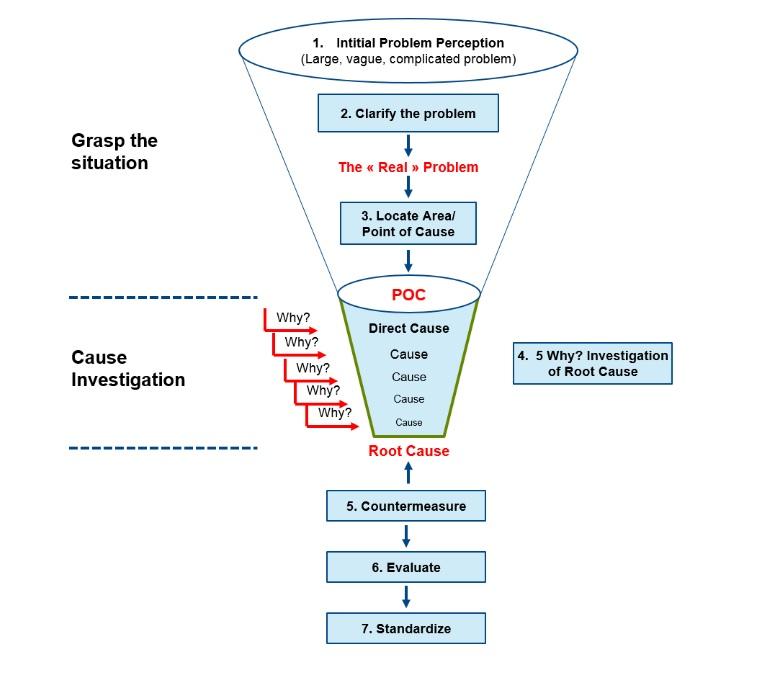
Case Studies:
Real-world applications underscore the potency of ChatGPT in quality engineering. One case involves a manufacturing company facing Plasma Cut shift in automotive parts. By engaging ChatGPT, engineers efficiently identified the root cause and implemented corrective measures. The AI’s ability to generate hypotheses and guide investigations contributed to the timely resolution of a critical problem. Such success stories highlight the tangible impact of AI-powered problem-solving on industries.
1. Use of chatGPT to Clarify The Problem :
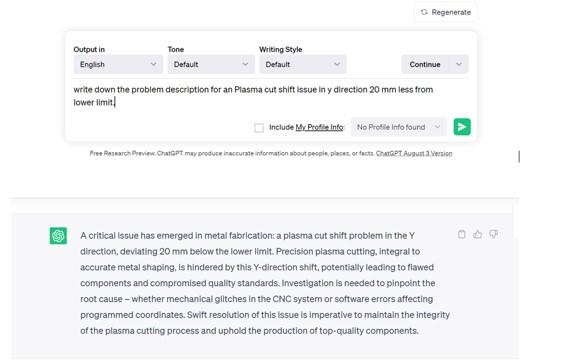
2. Use ChatGPT To Identify The Root Cause:
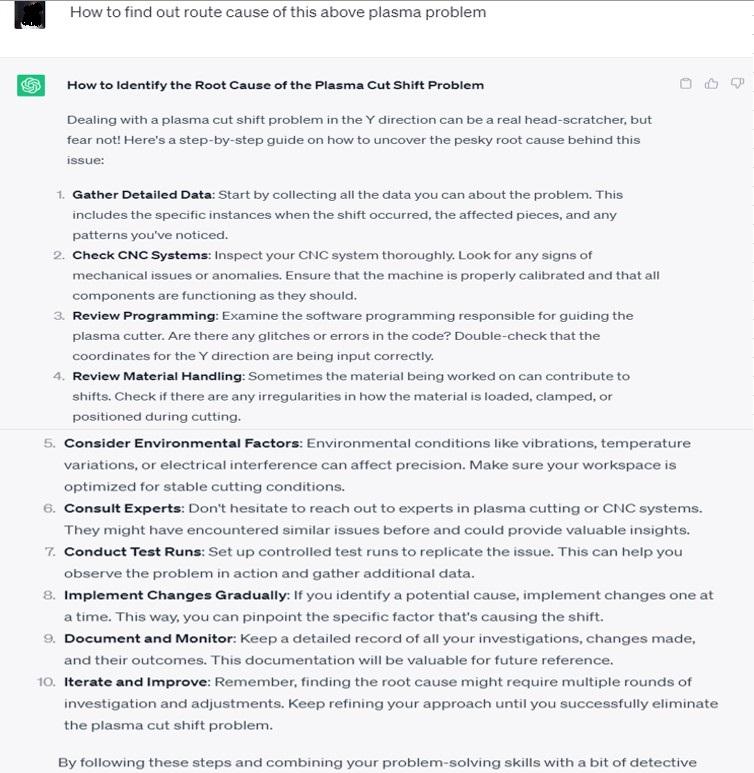
3. Use ChatGPT To Write Why- Why Analysis:
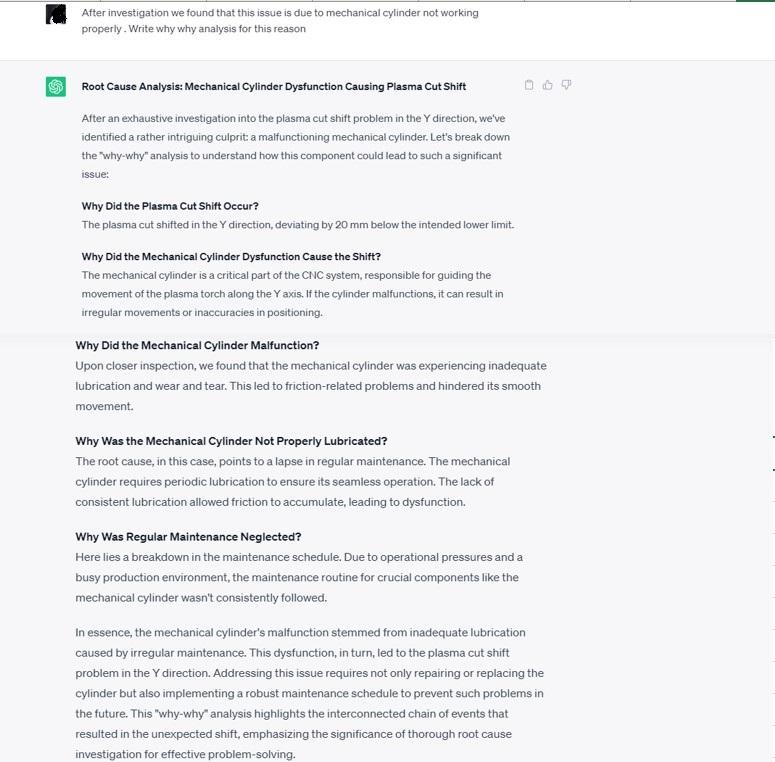
4. Use ChatGPT To Write Corrective & Preventive Action Plan:
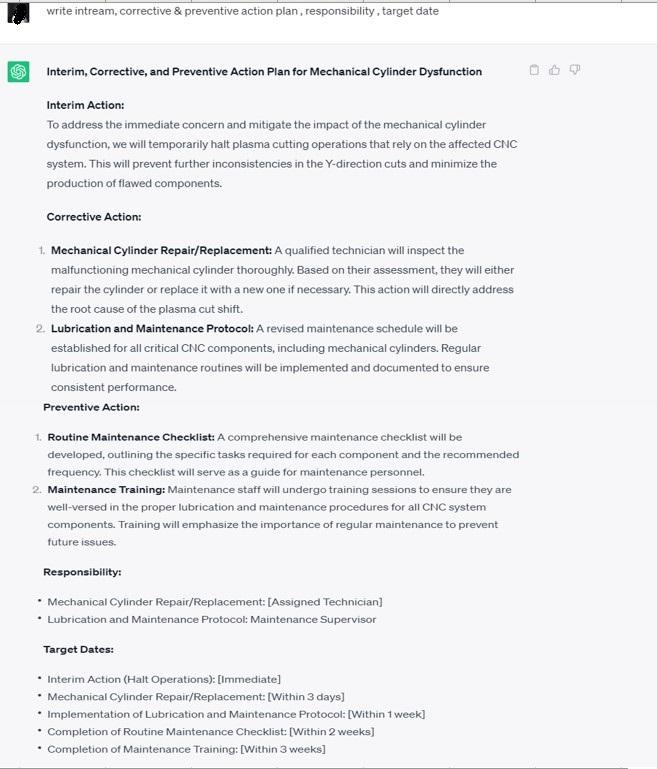
Advantages and Benefits :
The integration of ChatGPT into quality assurance workflows offers an array of benefits. Rapid problem diagnosis, efficient brainstorming, and optimized processes are just a few. With ChatGPT, quality engineers can reach resolutions faster and with a higher degree of accuracy, ultimately enhancing overall operational efficiency. This efficiency extends to collaboration, as ChatGPT can serve as a knowledge-sharing platform among quality teams, fostering cross-functional innovation.
Addressing Concerns and Limitations:
While the potential of ChatGPT is impressive, there are valid concerns regarding AI biases and reliability. It’s crucial for quality engineers to recognize these limitations and implement appropriate checks and balances. Responsible use of AI ensures that the insights gained are accurate and unbiased. Implementing transparency mechanisms within AI systems helps quality engineers maintain visibility into the decision-making processes facilitated by AI. ChatGPT is tool to reduce your non value added activity & utilize this time to implement & monitor the real process.
Implementing ChatGPT in Quality Assurance Workflow:
Integrating ChatGPT seamlessly requires a structured approach. Quality engineers can follow these steps:
Identify Use Cases: Determine where AI-powered assistance can streamline problem-solving. From root cause analysis to process optimization, pinpoint areas where ChatGPT can provide the most value.
Train the Model:
Fine-tune ChatGPT for industry-specific terminology and contexts. This customization enhances the accuracy of AI-generated insights.
Collaborative Learning:
Continuously update the AI based on new insights and solutions. Regularly feed real-world data and outcomes back into the AI model to improve its performance over time.
Future Possibilities and Trends:
As AI technology evolves, the potential applications in quality assurance are limitless. From predictive analysis to automated resolution, ChatGPT’s future iterations hold promise for even more efficient and accurate solutions. The convergence of AI and quality engineering is expected to lead to predictive quality management systems that can anticipate issues before they arise, contributing to even higher levels of product excellence.
Ethical and Responsible Use of AI :
The adoption of AI should be underpinned by ethical considerations. Transparency, fairness, and accountability must guide the implementation of AI-driven solutions. Quality engineers should actively monitor AI-generated insights, ensuring they align with ethical standards and industry regulations.
Conclusion:
In an era defined by innovation, quality engineers must adapt to novel problem-solving paradigms. ChatGPT exemplifies the fusion of artificial intelligence with human expertise. By embracing this technology responsibly, quality engineers can navigate complex challenges and drive quality assurance to new heights. The synergy between modern quality engineering principles and AI-powered solutions creates a pathway to a more efficient, effective, and forward-looking quality assurance landscape.
Click below for similar topic
Understanding The Economics of Quality
- Top 15 MNCs Every Mechanical Engineer Dreams of Joining in 2025

- How to Digitize and Automate the CAPA Process

- Top 10 Essential Tools Every Mechanical Engineer Should Know

- What is GD&T (Geometric Dimensioning & Tolerancing) ?

- Principles of IATF 16949: A Guide to Quality Management
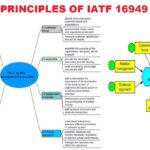
- The Evolution of IATF 16949: The Automotive Quality Standard

- Top Interview Questions Related to SPC ,Cp and Cpk
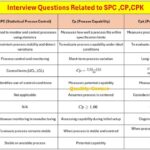
- Difference Between Purchase and Procurement
